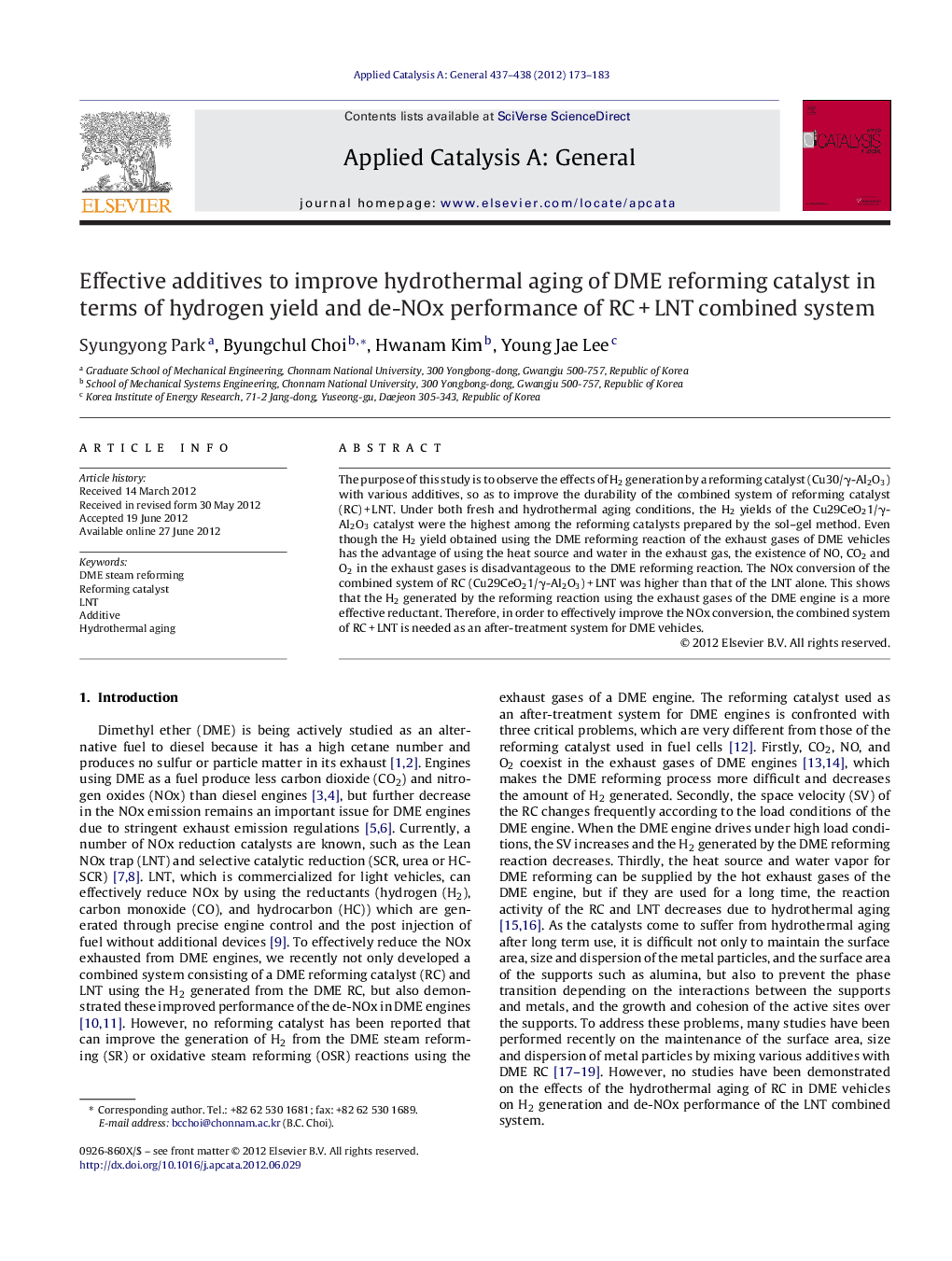| Article ID | Journal | Published Year | Pages | File Type |
|---|---|---|---|---|
| 40860 | Applied Catalysis A: General | 2012 | 11 Pages |
The purpose of this study is to observe the effects of H2 generation by a reforming catalyst (Cu30/γ-Al2O3) with various additives, so as to improve the durability of the combined system of reforming catalyst (RC) + LNT. Under both fresh and hydrothermal aging conditions, the H2 yields of the Cu29CeO21/γ-Al2O3 catalyst were the highest among the reforming catalysts prepared by the sol–gel method. Even though the H2 yield obtained using the DME reforming reaction of the exhaust gases of DME vehicles has the advantage of using the heat source and water in the exhaust gas, the existence of NO, CO2 and O2 in the exhaust gases is disadvantageous to the DME reforming reaction. The NOx conversion of the combined system of RC (Cu29CeO21/γ-Al2O3) + LNT was higher than that of the LNT alone. This shows that the H2 generated by the reforming reaction using the exhaust gases of the DME engine is a more effective reductant. Therefore, in order to effectively improve the NOx conversion, the combined system of RC + LNT is needed as an after-treatment system for DME vehicles.
Graphical abstractFigure optionsDownload full-size imageDownload high-quality image (261 K)Download as PowerPoint slideHighlights► Cerium (Ce) prevented the diffusion of Al to the surface after hydrothermal aging. ► Ce is a more effective additive for DME reforming catalyst. ► NOx conversion of the aged Cat-Ce + LNT system was 4% higher than that of the LNT at 350 °C.
